Table of Contents
Overview – Gene Mutations
Gene mutations are permanent alterations in the nucleotide sequence of a cell’s DNA. They may occur spontaneously or be induced by environmental mutagens such as radiation or chemicals. Mutations can affect gene structure or expression, potentially resulting in loss of function, gain of function, or altered regulation. Understanding gene mutations is critical in genetics, cancer biology, and inherited disease diagnosis.
What Are Mutations?
- A mutation is any change to the native DNA sequence
- Two main types based on mechanism:
- Substitution – one nucleotide is swapped for another
- Insertion or Deletion (indel) – one or more nucleotides are added or lost, often causing a frameshift

Mutagens
External agents that can cause mutations, including:
- UV light
- Ionising radiation (e.g. X-rays, gamma rays)
- Carcinogenic chemicals
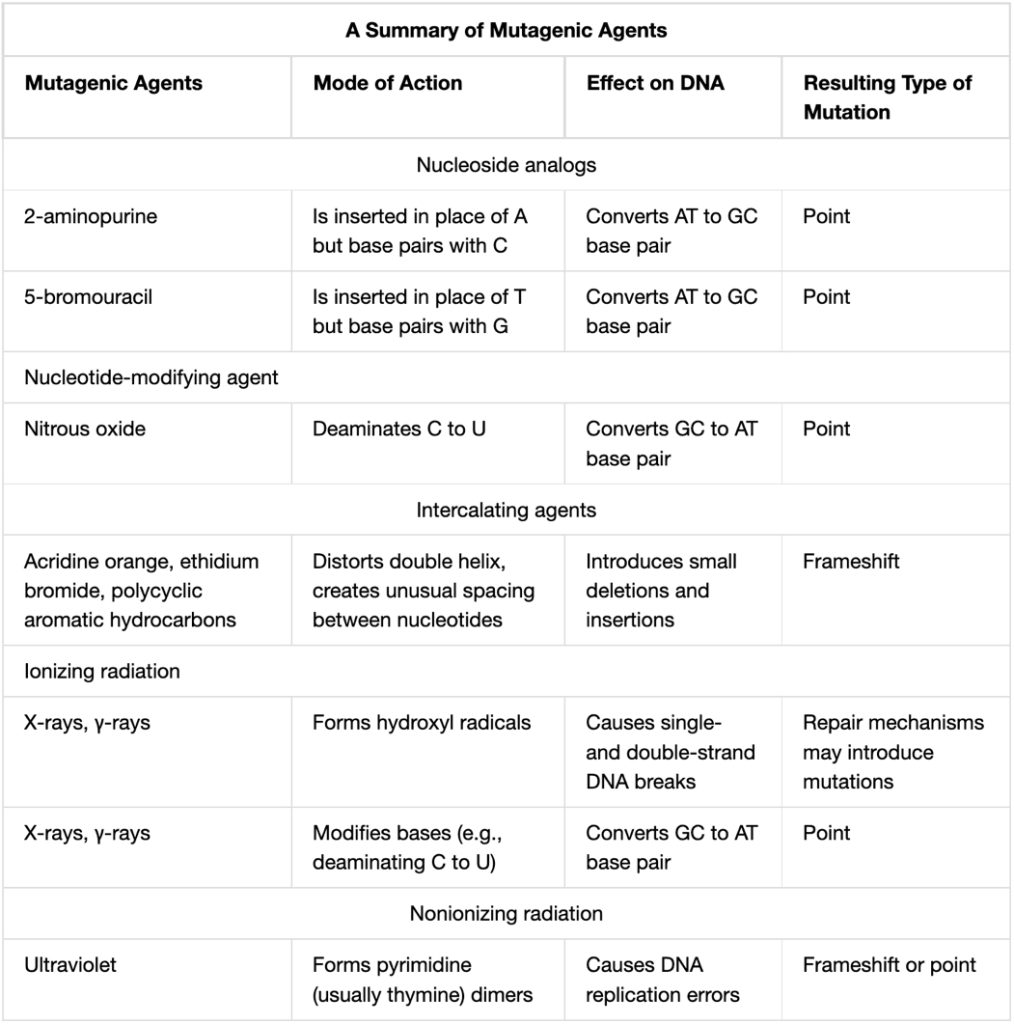
Effects of Mutations
Coding Region Mutations
- Change the amino acid sequence
- May alter protein structure or function
- Includes truncation, loss-of-function, or gain-of-function outcomes
Regulatory Region Mutations
- Affect when, where, or how much a gene is expressed
- Can increase, reduce, or silence gene activity

Dominant vs Recessive Mutations
| Type | Typically Affects | Typical Outcome |
|---|---|---|
| Dominant | Structural proteins | Gain-of-function |
| Recessive | Enzymes | Loss-of-function |
Mutation Notation
- DNA Level: e.g.
76 A>T→ position 76, adenine replaced with thymine (capital letters) - RNA Level: e.g.
76 a>u(lowercase, RNA bases) - Protein Level: e.g.
T26P- T = original amino acid
- 26 = position in the protein
- P = new amino acid
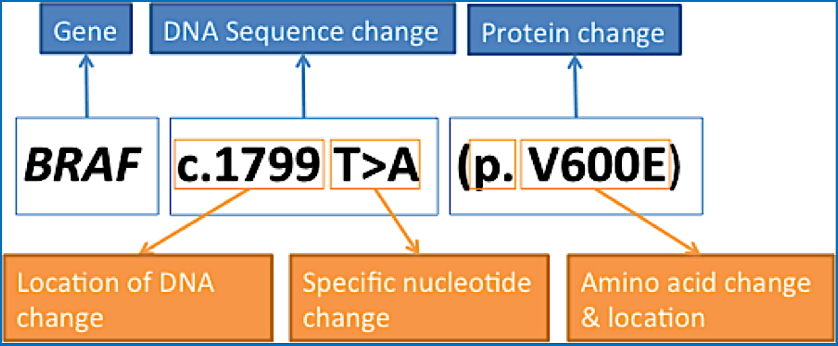
Substitution Mutations
Point Mutations (Single Base Substitutions)
- Synonymous (Silent):
- Change in base that still codes for the same amino acid
- Occurs in wobble position
- Missense:
- Codon now codes for a different amino acid
- Conservative → similar amino acid → may preserve function
- Non-conservative → dissimilar amino acid → often disrupts function
- Nonsense:
- Mutation introduces a stop codon, truncating the protein
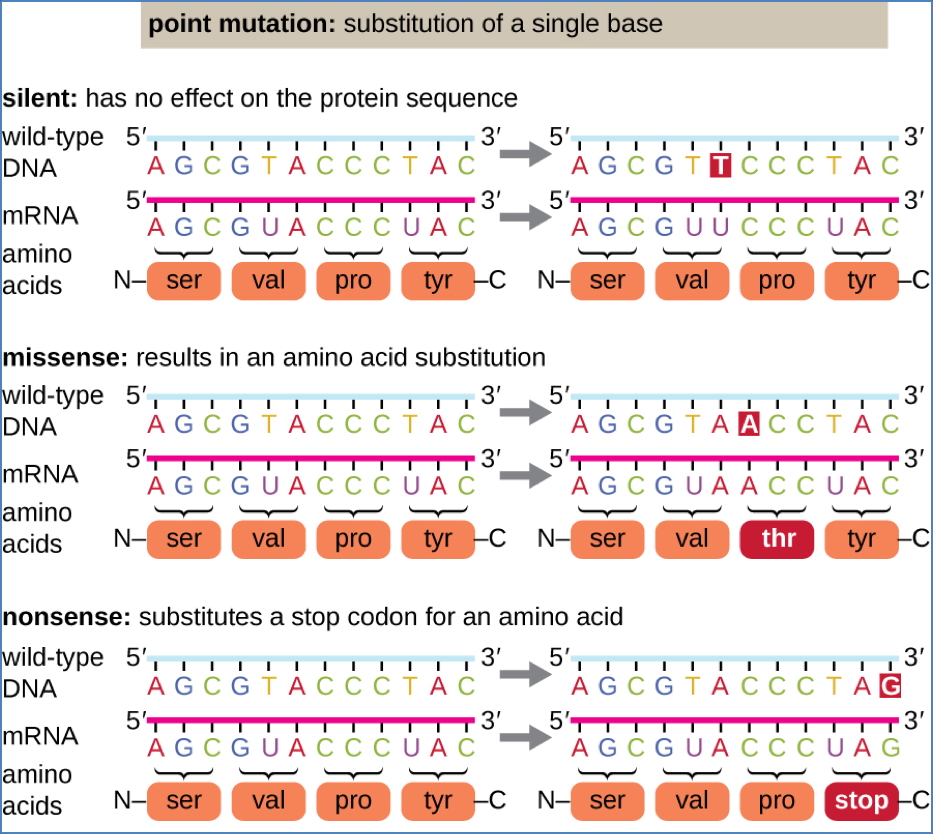
Insertion and Deletion Mutations
Insertions
- Addition of one or more bases
- May disrupt splicing (if in introns)
- May cause frameshift if not a multiple of three
Deletions
- Loss of one or more bases
- Can be small (a few bases) or large (millions)
- May affect multiple genes
- Often results in frameshift mutations
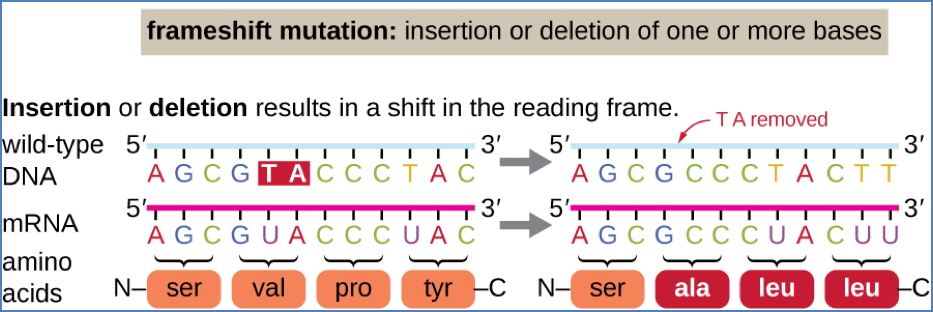
Dynamic Mutations
- Caused by expanding or contracting tandem repeats (e.g. CAG repeats)
- Lead to slippage during DNA replication
- Associated with anticipation (see below)

Functional Impact of Mutations
Gene Function Thresholds
- Some genes tolerate partial loss before symptoms appear
- Others cause disease even with minor disruptions
- Severity may scale with amount of functional loss

Expression vs Penetrance
- Expression: Degree of phenotype expression (mild to severe)
- Influenced by modifier genes and environmental factors
- Penetrance: Likelihood that a person with the mutation shows the phenotype
- Some disorders are fully penetrant
- Others may only affect a subset of carriers
Anticipation
- Worsening symptoms or earlier onset across generations
- Occurs only in repeat expansion disorders
- Often linked to paternal transmission due to unstable CAG repeats in sperm production
Classes of Mutant Alleles
| Allele Type | Effect |
|---|---|
| Hypomorph | Decreased gene function (usually recessive) |
| Hypermorph | Increased gene function |
| Neomorph | New/novel function |
| Antimorph | Antagonistic to normal gene function |
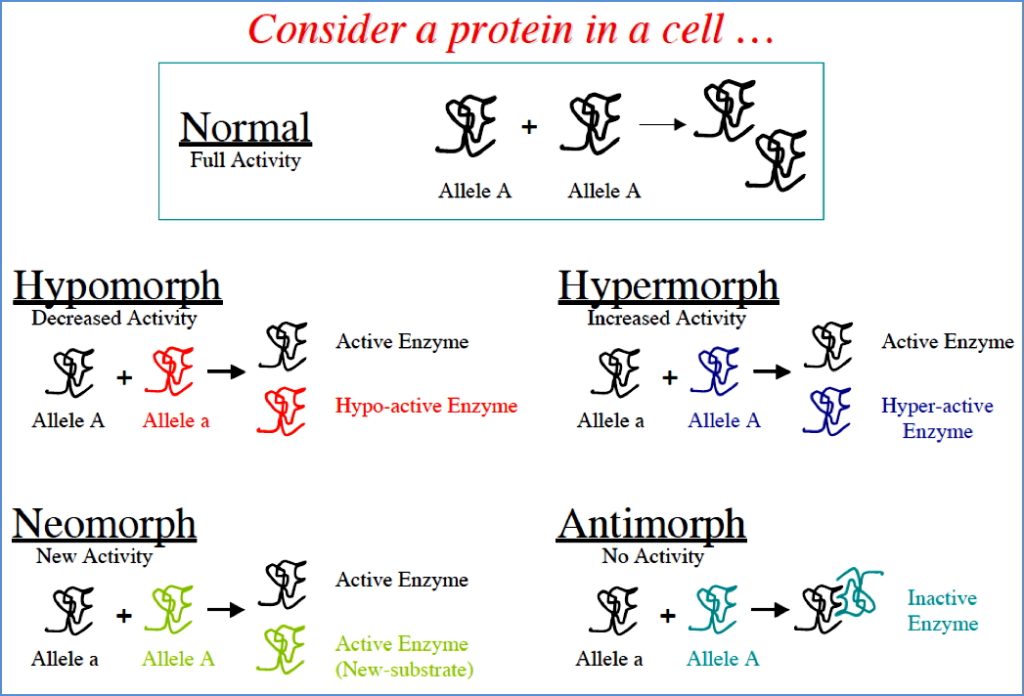
Note: Most mutant alleles are dominant, except hypomorphs, which are usually recessive.
Summary – Gene Mutations
Gene mutations alter DNA sequences through substitution, insertion, or deletion. Their consequences depend on where they occur and how they affect gene expression or protein function. Some are silent, while others can cause disease. Inheritable, dynamic, and regulatory mutations all play key roles in genetic pathology. For a broader context, see our Genetics & Cancer Overview page.